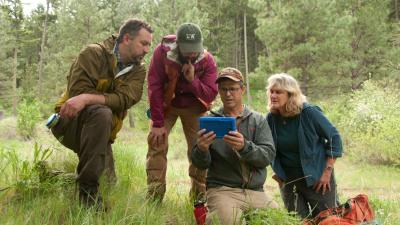There is increasing evidence that spatial heterogeneity at multiple scales is a critical component of ecosystem resilience and adaptive capacity. In frequent-fire pine and mixed conifer forests in the western US, pre-settlement era forests were complex mosaics of individual trees, tree clumps, and openings. There is a broad scientific consensus that restoration treatments should seek to restore these mosaic patterns as these reference forests were adapted to frequent-fire and shifting climatic conditions (Churchill 2013).
The NWFSC sponsored a workshop where participants learned about the science behind restoring a forest to a more natural pattern of individual trees, tree clumps, and forest openings (ICO) - watch the video here, http://ow.ly/uvWY30jl4Oe. Managers had the opportunity to practice using QuickMap, a forestry app created by Derek Churchill and team to implement the ICO approach to ecological restoration thinning in dry western forests.

P.C. Hannah Letinich/Nature Conservancy WA
The ICO approach has been implemented on a number of public and private ownerships and the method is fully operational. Many sales have been marked, sold, and cut, and more are currently in the pipeline. The method can be used for any forest type where reference targets exist or can be defined.
Want to know more about the ICO approach? A "How To" guide has been developed for managers and stakeholders wishing to implement the method for silvicultural prescriptions and/or monitoring.